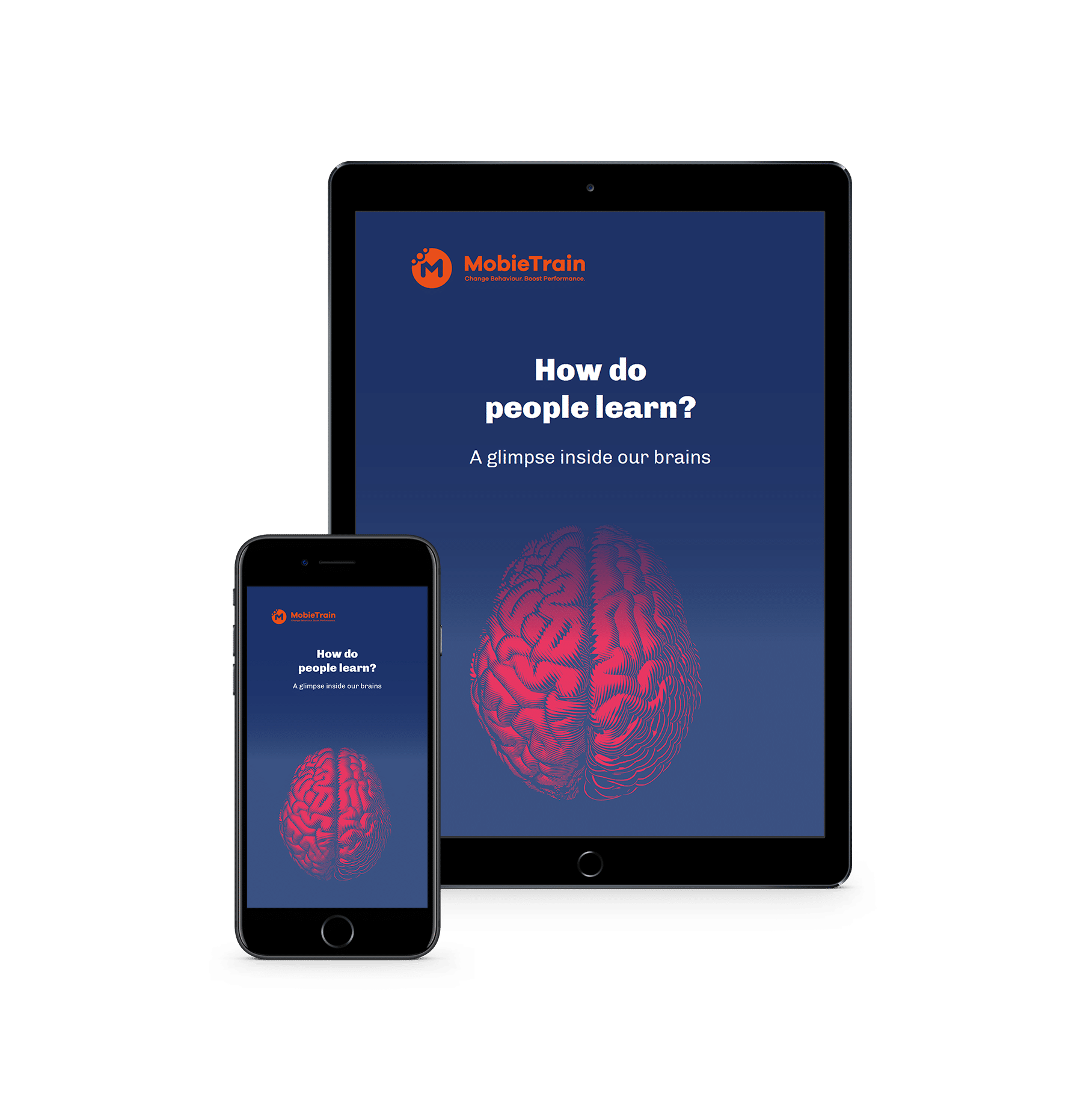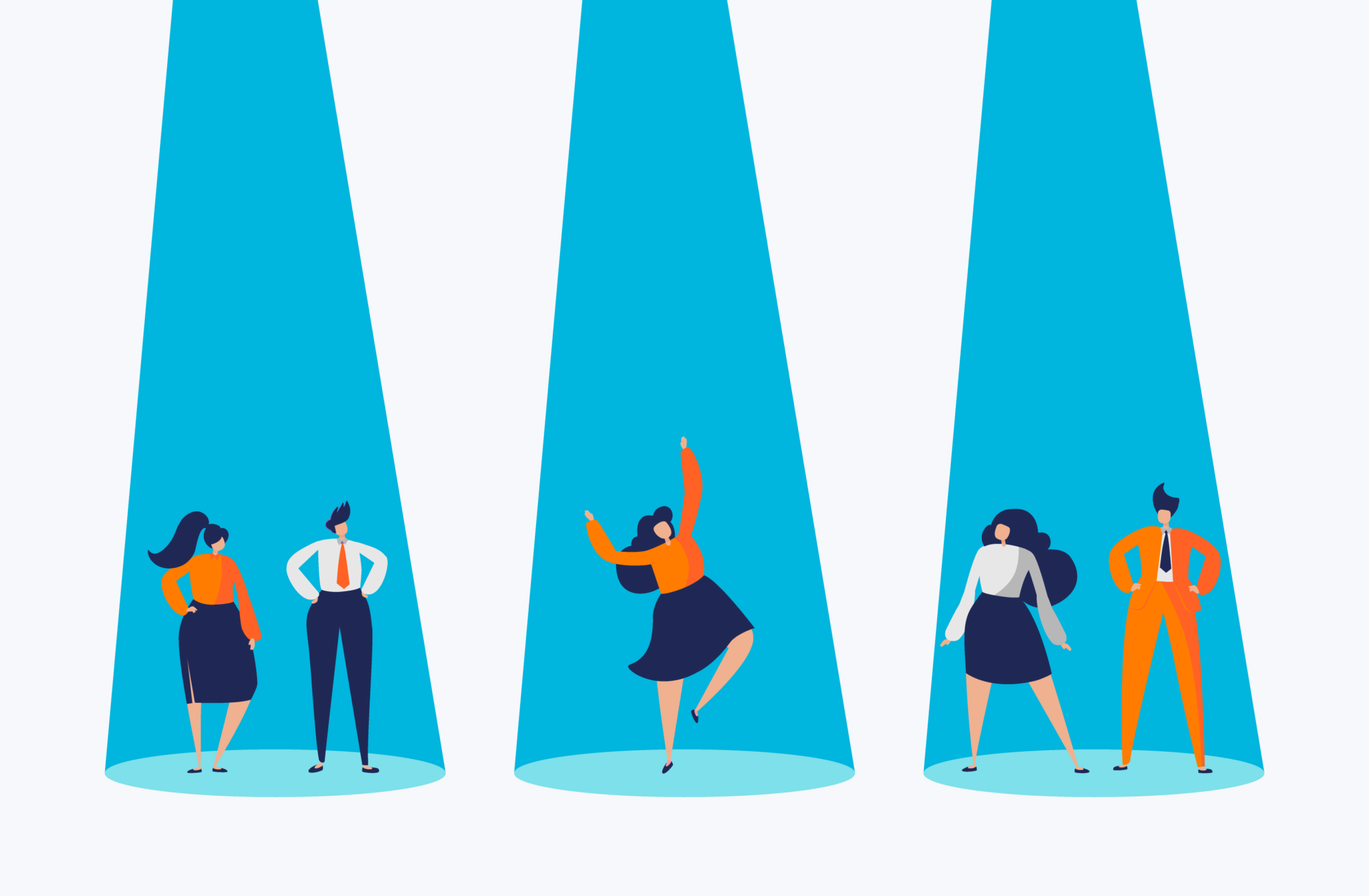How do you process new information? A look into the brain

If you want to make your employees’ training intrinsically better, it’s a good idea to go back to the basics by looking at the way we process information. Our human brains are highly complex and adjusting your training content in a way that compliments the processes of the brain can have a great impact.
The different learning styles
You may or may not already know this, but not everyone learns in the same way. Different learning styles lend themselves to different kinds of jobs. In general, we can split the different learning styles into four main categories:
- First of all, there are real doers like bus drivers, construction workers and employees in the logistics industry. These people learn by doing or experiencing, rather than learning from a book or computer. An office space is their worst nightmare.
- Then there are the dreamers. If they could perceive, interpret and overthink all day, they would. You will find these people mostly in creative industries.
- There are also people that learn to analyze and think, we call them thinkers. Thinkers are very rational and are therefore perfect for data analyst jobs.
- Last but not least we have the decision maker. These people learn by experimenting and need to turn theory into practice. The environmental sector is perfect for decision makers, as it focuses on a constant shift between theory and practice.
So how do we approach training in workplaces that consist of people with a mixture of learning styles? With MobieTrain’s mobile microlearning platform you can personalize training for every single employee, so that everyone learns in a way that specifically works for them. Below we will explain exactly how we do this.
How does the brain work?
Our brain is naturally lazy, so we have to stimulate it in a way that tricks the brain in wanting to learn (more). The type of neurotransmitter that gives us a feeling of wanting more is dopamine. Dopamine is released when your brain is expecting a reward, which means we’re motivated to get the reward by doing what’s necessary.
In order to keep the dopamine levels of your employees high, it’s important to make learning fun. A great way to do this is by stimulating their curiosity through teasers of the training. Once the training has started, you can encourage their self-motivation by incorporating gamification into their training paths. Together with MobieTrain, you can easily implement gamification and rewards into your employees’ training, so that their dopamine levels are consistently high.
Maintain your employees’ attention
Once you have your employees’ attention, it’s important to keep it. In order to achieve this, it’s crucial to personalize the training content. We already mentioned earlier that personalization is key for your employees’ specific learning style, but it goes further than that. By personalizing training paths, the respective level of difficulty will always be adjusted to the individual student. Whenever something is too easy or too difficult, people tune out immediately, so this part of developing training content is essential.
Next to keeping your employees’ attention, it’s critical to optimize their memory as well. Researchers have found that spaced repetition is the ideal solution for this. Meaning that students won’t consume large amounts of information, but instead do short rounds of reviews over a longer period of time.
If you want to learn more about this topic, head over to our eBook ‘How do People Learn?’.

